Vopnafjörður: Off the beaten track in Austurland
Vopnafjörður invites you to wind down among the glorious landscapes. Walks here give access to bird-rich sea cliffs and cool rock formations, mountain trails, fishing rivers, and a remote swimming pool. Breathe deeply. Enjoy the calm. Revel in the nature. This is slow travel at its finest.
About Vopnafjörður
The village of Vopnafjörður has a population of fewer than 700 people. It sits on a finger of land that extends into a wide fjord, also named Vopnafjörður, surrounded by rugged mountains and untouched landscapes.
The fjord’s name means ‘Weapons fjord’ and comes from Eyvindur Vopni, one of the three original settlers in Vopnafjörður from the time of the Vikings.
You might be wondering what people do for a living out this way. You’ll probably notice the strong presence of fishing boats and a fish-processing factory, and the peaceful farms. If you’re curious about another aspect of local life, consider a visit to the local eiderdown farm, where you can learn about the life of eider ducks, and how their down (famously soft, light and warm) is hand-collected without harming the birds, then cleaned and processed. It’s a fascinating behind-the-scenes look at how cozy quilts, duvets and pillows are brought to life.
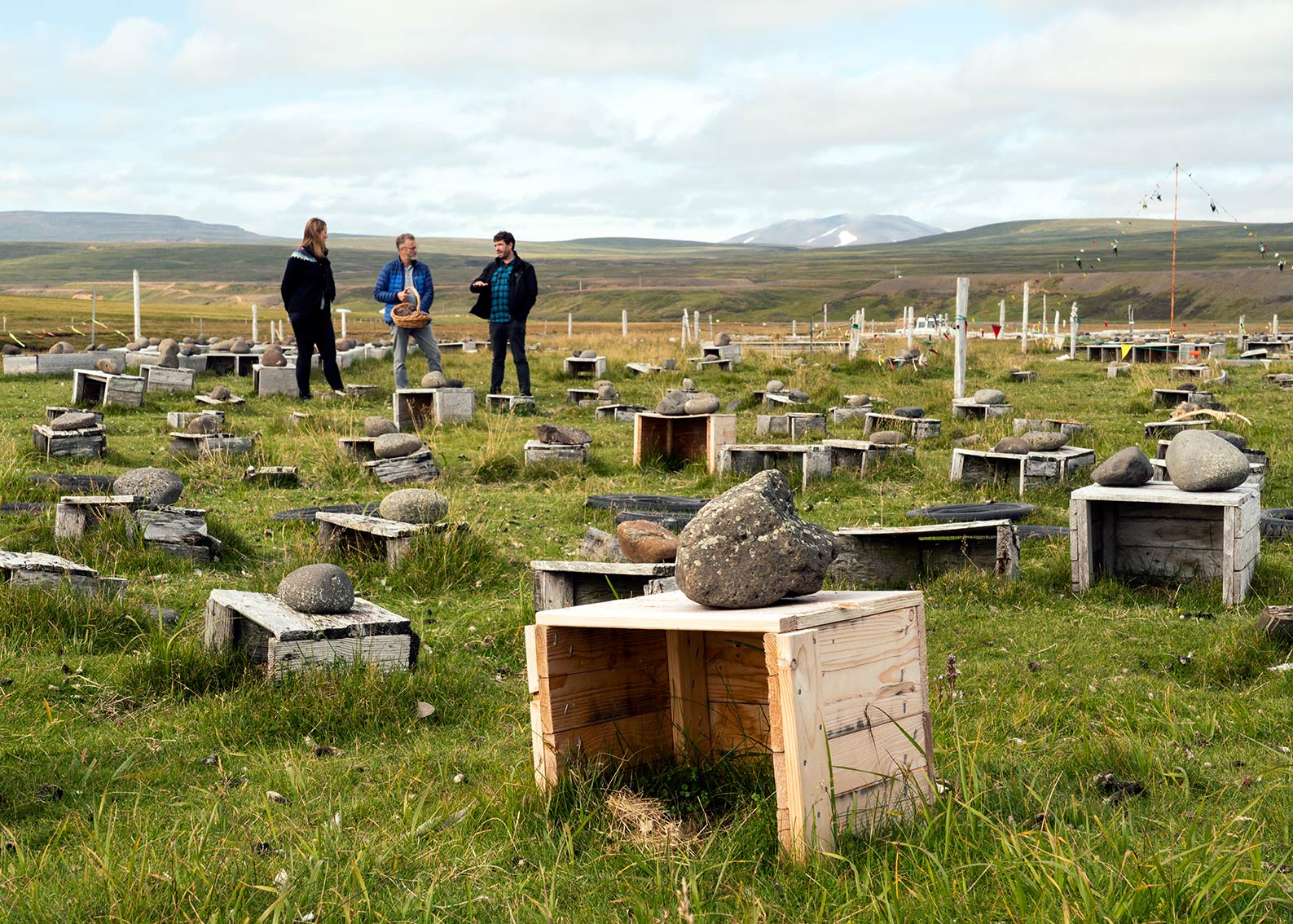
Eider down comforters. Photo: Jessica Auer.
To stay in the area, there are a handful of farm guesthouses and cottages ready to welcome visitors keen for a taste of rural life.
The main road access to Vopnafjörður is via Route 85, which turns off the Ring Road (Iceland’s Highway 1) roughly halfway between the Mývatn region in North Iceland and Egilsstaðir in East Iceland (or Austurland, as we know it). From the Ring Road turn-off, it’s about 50km (31 miles) to Vopnafjörður.
Some recommended driving routes:
- Our On the Edge travel route is a scenic smorgasbord taking you to Austurland’s beautiful northeastern fjords, Vopnafjörður and Borgarfjörður eystri, and the hidden gems that surround them. In summer, the steep and twisting mountain road that travels over Hellisheiði eystri (Route 917) is a breathtaking option connecting the two areas, with views for miles. It’s generally passable for all vehicles in summer, but closes with the first snowfalls in the fall. Check out the local road conditions before you tackle it. And don’t worry if you need to take Route 85 and Highway 1 instead of Route 917 – the views out your windows are amazing whichever way you travel.
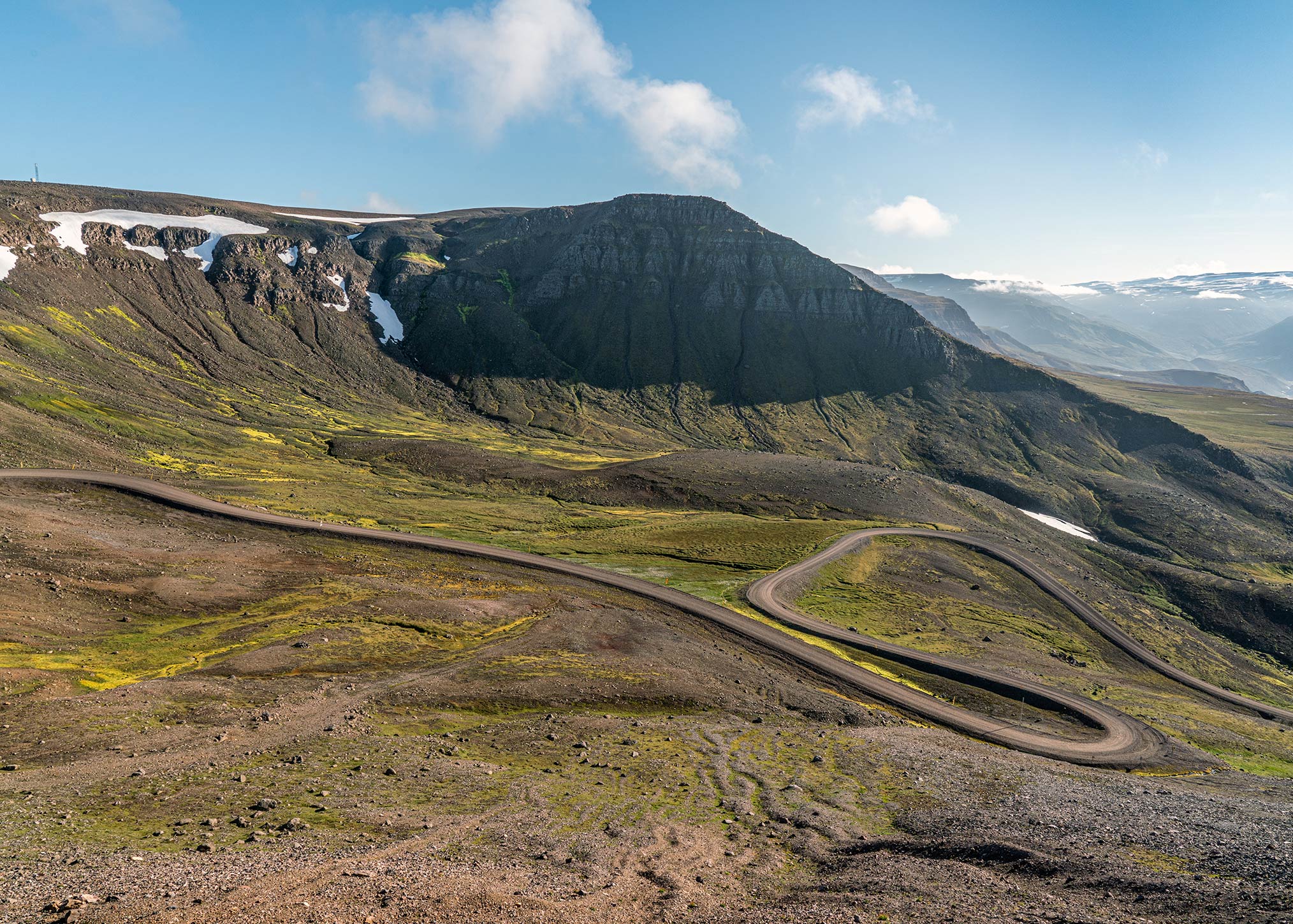 Hellisheiði eystri. Photo: Jessica Auer.
Hellisheiði eystri. Photo: Jessica Auer. - If you’re looking to explore a relatively untouched part of Iceland, the northeast pocket is a treat. Route 85 runs through the northeast, traveling around 280km (174 miles). It starts close to the beautiful Goðafoss waterfall and heads north to Húsavík for whale-watching, then continues to the northern reaches of Vatnajökull National Park at Ásbyrgi, and on through quiet villages of Kópasker and Þórshöfn before reaching Vopnafjörður. You can take a few days to really get off the beaten track here, and savor a part of Iceland that doesn’t feature on many tourist itineraries. A good portion of this itinerary travels the Arctic Coast Way.
History comes to life
The natural wonders are in evidence all around you in Vopnafjörður, but there are great tributes to history here, too. The local harbor is a focal point, lined with fishing boats and with a pretty sailboat monument in a prime spot for photos.
The 1882 building known as Kaupvangur is a restored customs house in the heart of town. It’s a cultural center and houses a museum in remembrance of the thousands of emigrants who left this region for Canada and the USA in the wake of the Askja volcanic eruption in 1875. The East Iceland Immigration Center is headquartered here, staffed by volunteers who help ‘Western Icelanders’ retrace their roots. (That’s a term for Icelandic Canadians and Icelandic Americans, descendants of these emigrants.)
In a pretty valley outside Vopnafjörður, the turf-roofed farm Bustarfell is a folk museum where history comes alive through summertime storytelling and workshops. This evocative turf farm has been in the same family for almost 500 years, and inside the red-gabled, grass-roofed farmhouses you can trace the family’s history while learning about Iceland’s path to modernization. The farm was lived in until 1966 – and the museum manager was born here! Stop by for a warm welcome, plus coffee and cake at Café Hjáleigan, and rich insights into Austurland life.
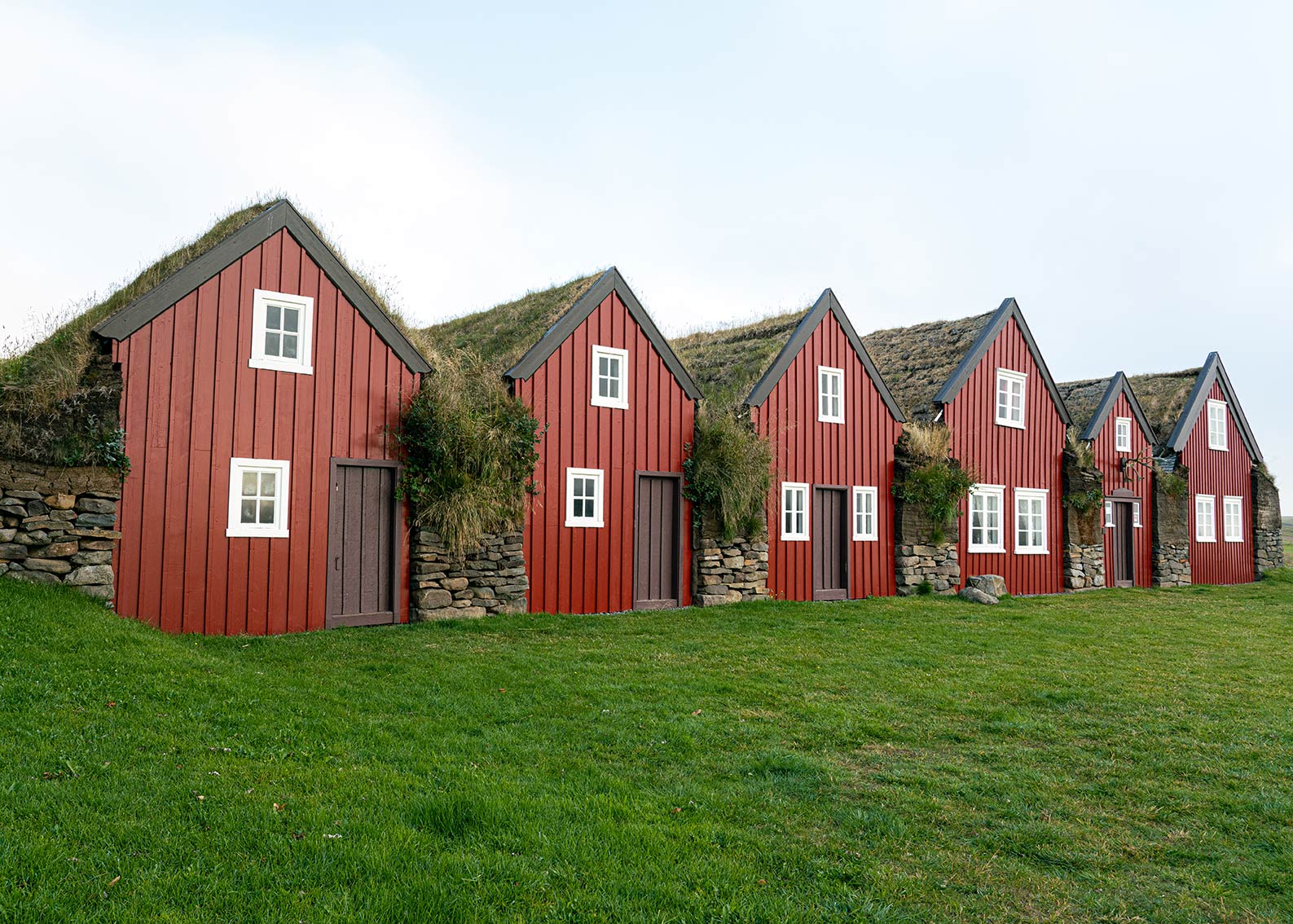 Bustarfell. Photo: Jessica Auer.
Bustarfell. Photo: Jessica Auer.
Natural goodness
While the village itself is quaint, the real magic of Vopnafjörður lies in its surrounding natural landscapes: mountains, valleys, sea cliffs, black-sand beaches, rock formations and more.
Some of Iceland’s most popular salmon-fishing rivers flow into the sea at Vopnafjörður. World-renowned rivers such as Selá and Hofsá have hosted illustrious guests including Britain’s King Charles and former US president George Bush senior. The local birdlife is another magnet, while coastal walking trails and mountain hikes add more opportunities for active sightseeing.
Along the coastline you’ll witness the impressive force of the Atlantic Ocean, from the driftwood that accumulates to the weathered rock formations. The landmark 20-meter Kolbeinstangaviti lighthouse is an ideal destination for an easy walk from the village, north along the shoreline of the peninsula.
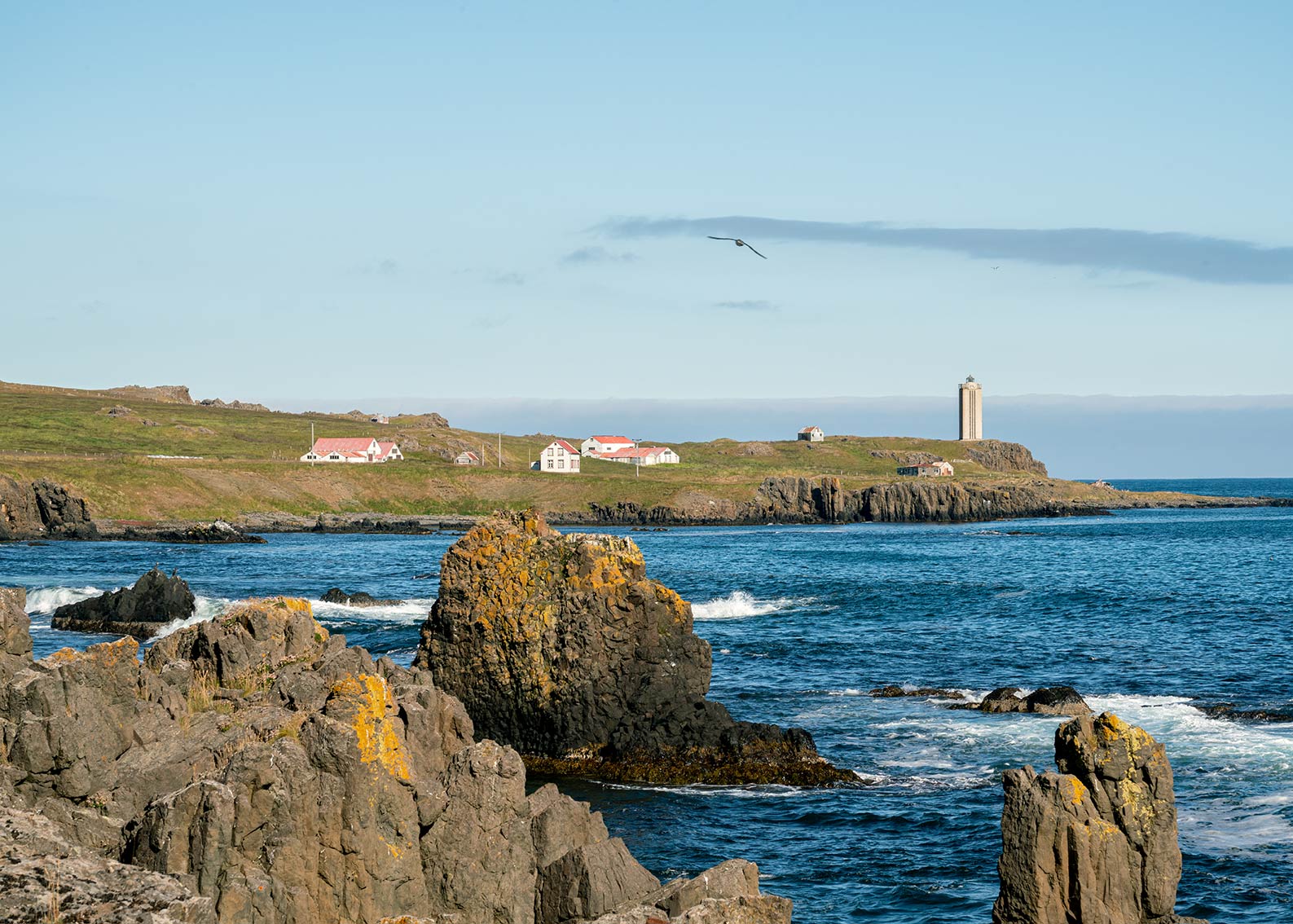 Kolbeinstangi. Photo: Jessica Auer.
Kolbeinstangi. Photo: Jessica Auer.
One unique local characteristic is the incredible rock pillars and cliffs that take on various forms, often resembling different creatures. Heading east of town, make sure to check out Ljósastapi rock pillar, standing in the sea just off Skjólfjörur black sand beach. It’s often called ‘Fíllinn’ by the locals – the word means ‘elephant’ in Icelandic.
On the way to your elephant safari, you’ll pass Gljúfursárfoss, a beautiful, 45-meter-tall roadside waterfall. From the cascade, there’s a marked walking trail that follows the Gljúfursá river down to the sea.
On the fjord’s north side, Fuglabjarganes is a scenic stretch of coast where birdlife fills the bluffs and rock pillars stand to attention. The area is on Iceland’s nature conservatory list for its beauty and diversity, and its excellent birdlife.
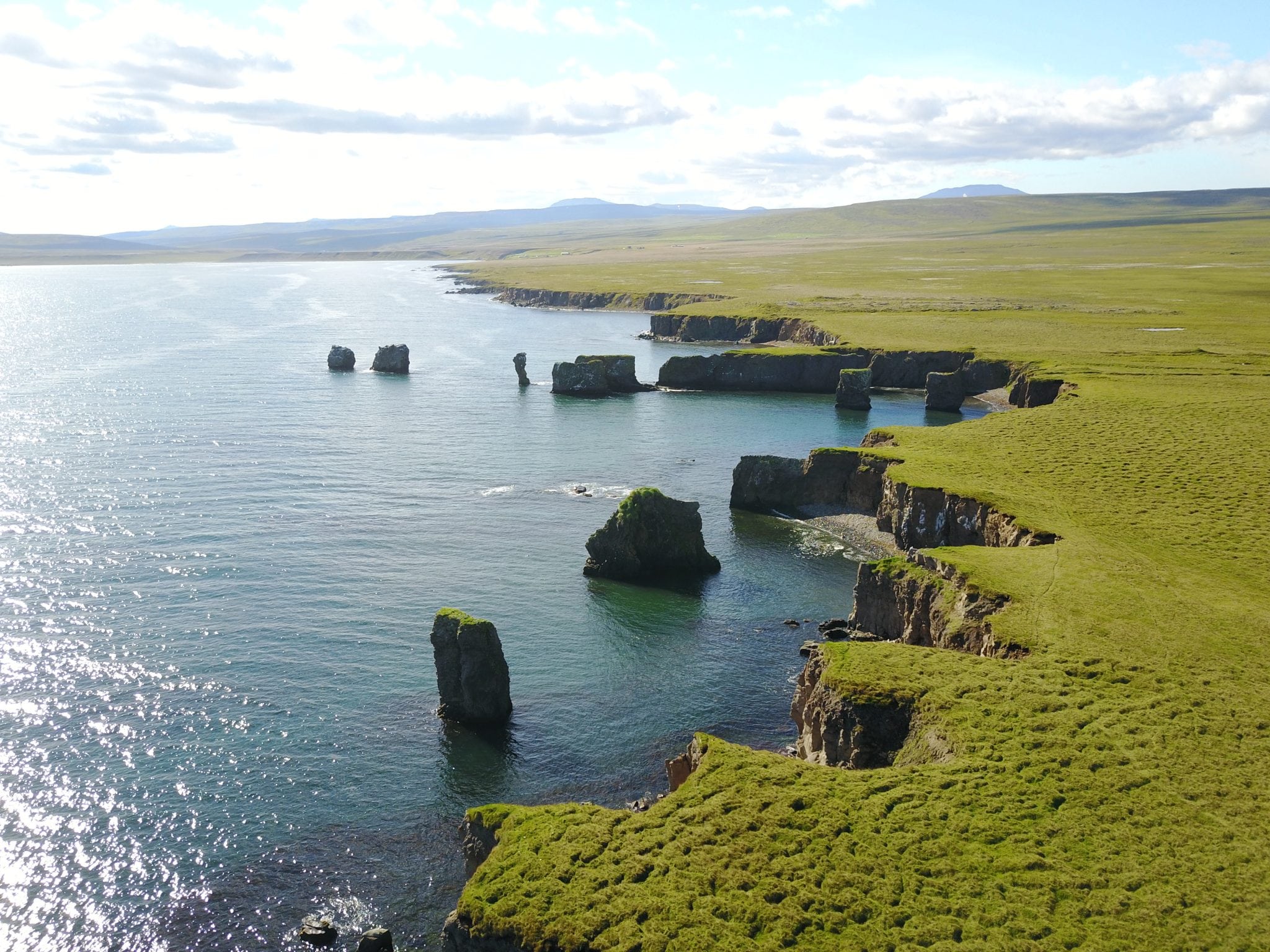 Fuglabjargarnes. Photo: Páll Guðmundsson.
Fuglabjargarnes. Photo: Páll Guðmundsson.
Inland, with access from Route 919, a great two-hour hike that takes you along Þverá river in the colorful canyon known as Þverárgil. The color is thanks to rhyolite, from an old volcano.
To end a perfect day exploring Vopnafjörður, you should seek out the geothermal swimming pool Selárlaug (also called Selárdalslaug) for a true local experience, no matter the weather. It sits in a remote location on the banks on the river Selá about 12km (7 miles) from Vopnafjörður, offering one of Iceland’s finest pool experiences.
You’ll leave Vopnafjörður with a sense of wonder, and with your batteries recharged – we’re sure of it!
 Selárdalslaug. Photo: Jessica Auer.
Selárdalslaug. Photo: Jessica Auer.
Words: Carolyn Bain

